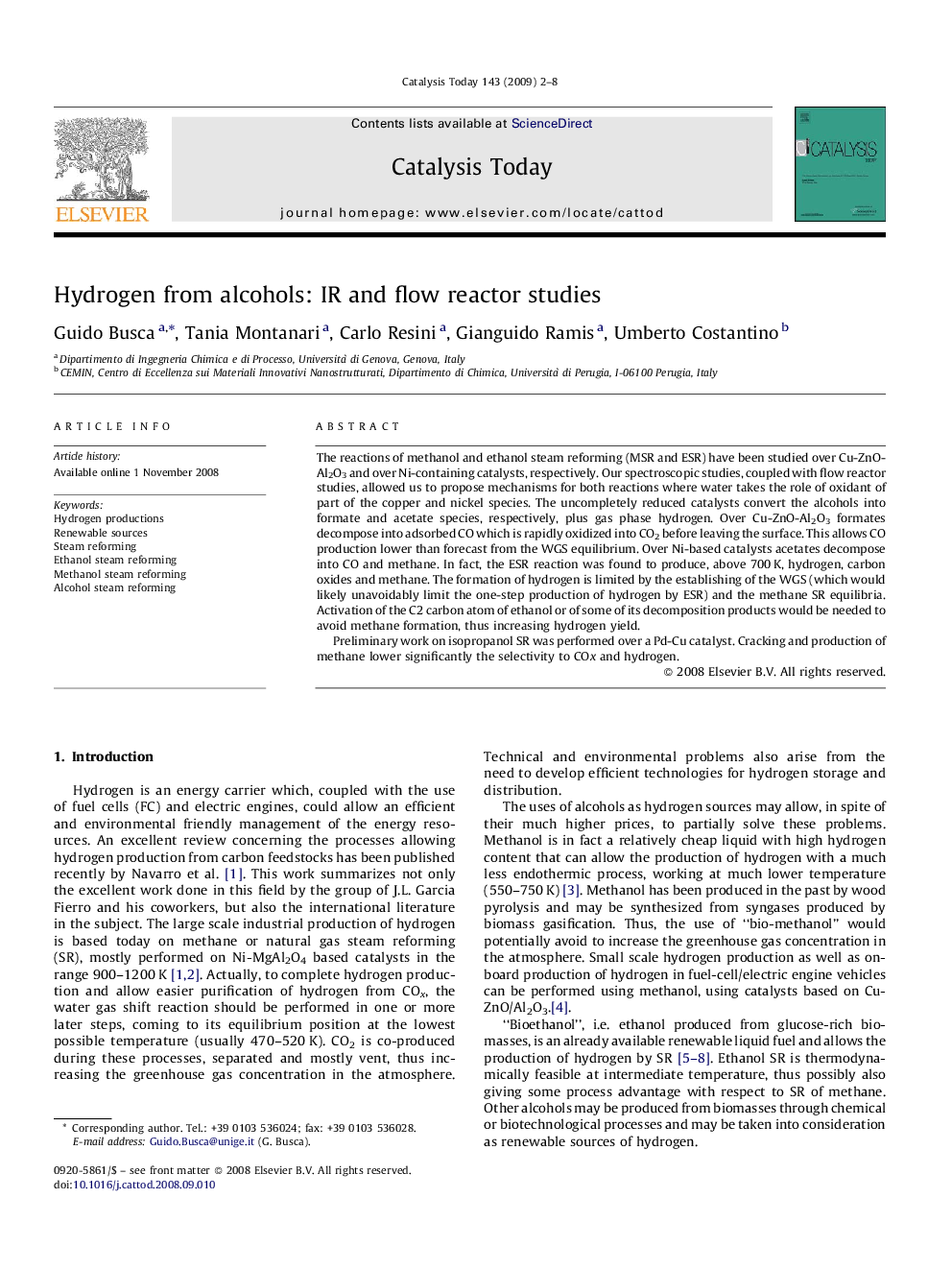| Article ID | Journal | Published Year | Pages | File Type |
|---|---|---|---|---|
| 57352 | Catalysis Today | 2009 | 7 Pages |
The reactions of methanol and ethanol steam reforming (MSR and ESR) have been studied over Cu-ZnO-Al2O3 and over Ni-containing catalysts, respectively. Our spectroscopic studies, coupled with flow reactor studies, allowed us to propose mechanisms for both reactions where water takes the role of oxidant of part of the copper and nickel species. The uncompletely reduced catalysts convert the alcohols into formate and acetate species, respectively, plus gas phase hydrogen. Over Cu-ZnO-Al2O3 formates decompose into adsorbed CO which is rapidly oxidized into CO2 before leaving the surface. This allows CO production lower than forecast from the WGS equilibrium. Over Ni-based catalysts acetates decompose into CO and methane. In fact, the ESR reaction was found to produce, above 700 K, hydrogen, carbon oxides and methane. The formation of hydrogen is limited by the establishing of the WGS (which would likely unavoidably limit the one-step production of hydrogen by ESR) and the methane SR equilibria. Activation of the C2 carbon atom of ethanol or of some of its decomposition products would be needed to avoid methane formation, thus increasing hydrogen yield.Preliminary work on isopropanol SR was performed over a Pd-Cu catalyst. Cracking and production of methane lower significantly the selectivity to COx and hydrogen.
